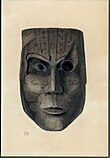
Pinellas County is a county located on the west central coast of the U.S. state of Florida. As of the 2020 census, the population was 959,107, which makes it the seventh-most populous county in the state. It is also the most densely populated county in Florida, with 3,491 residents per square mile. The county is part of the Tampa–St. Petersburg–Clearwater Metropolitan Statistical Area. Clearwater is the county seat. St. Petersburg is the largest city in the county, as well as the largest city in Florida that is not a county seat.

Bay Pines is a census-designated place (CDP) in Pinellas County, Florida, United States. The population was 2,931 at the 2010 census. The community is home to Bay Pines Veterans Hospital and Bay Pines National Cemetery.

South-southwest of St. Petersburg, Florida, Fort De Soto Park is a park operated by Pinellas County on five offshore keys, or islands: Madelaine Key, St. Jean Key, St. Christopher Key, Bonne Fortune Key and the main island, Mullet Key. The keys are connected by either bridge or causeway. The island group is accessible by toll road from the mainland. Historically, the islands were used for military fortifications; remnants and a museum exhibit this history. Two piers, beaches, picnic area, hiking trails, bicycling trails, kayak trail, and a ferry to Egmont Key State Park are available.
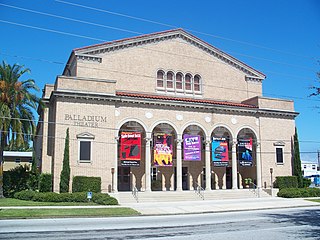
The North Shore Historic District, commonly known as Old Northeast or Historic Old Northeast, is a U.S. historic district located in St. Petersburg, Florida. The district, located adjacent to Downtown, is bounded by 4th Street N, 5th Avenue N, Tampa Bay, and 30th Ave N. It contains 2975 historic buildings and 4 objects. This area is mostly residential but does contain some retail, dining, parks and city landmarks. It also has been featured in the "Great Homes and Destinations" section of the New York Times.

The Jungle Prada Site is an archaeological site featuring Indigenous Tocobaga mounds and the location of the historical Narváez expedition landing. The Jungle Prada site spans public and private property, including the Jungle Prada de Narvaez city park, in St. Petersburg of Pinellas County, western coastal Florida, in the Southern United States.

The Safety Harbor site is an archaeological site in Philippe Park at 2525 Philippe Parkway in Safety Harbor, Florida, United States. It is the type site for the Safety Harbor culture, and includes the largest remaining mound in the Tampa Bay area. It was designated a National Historic Landmark in 1964.

The Old Pinellas County Courthouse is a historic county courthouse in Clearwater, Florida, USA. It was designed by Francis J. Kennard and constructed in 1918. It replaced a hastily constructed structure created to help establish Clearwater as the county seat. It is located at 315 Court Street. On June 25, 1992, it was added to the U.S. National Register of Historic Places.

Governor Stone is a historic schooner, built in 1877, in Pascagoula, Mississippi, United States. She is the only surviving two-masted coasting cargo schooner built on the Gulf Coast of the United States, and is only one of five such surviving US-built ships. On 4 December 1991, she was added to the US National Register of Historic Places. One year later, the schooner was designated a US National Historic Landmark. She is presently berthed at Saint Andrews Marina in Panama City, Florida, where she is maintained by a nonprofit group. Sailing tours are regularly scheduled.

The Snell Arcade is a historic site in St. Petersburg, Florida. The building was designed by the architect Richard Kiehnel of Kiehnel and Elliott. Built in 1926, it is located at 405 Central Avenue. On November 4, 1982, it was added to the U.S. National Register of Historic Places. The Snell Arcade was developed by C. Perry Snell, a wealthy landowner and philanthropist.

The Belleview-Biltmore Resort and Spa was a historic resort hotel located at 25 Belleview Boulevard in the town of Belleair, Florida, United States. The 350,000 square feet (33,000 m2) hotel structure was the last remaining grand historic hotel of its period in Florida that existed as a resort, and the only Henry Plant hotel still in operation when it closed in 2009. The building was noted for its architectural features, with its green sloped roof and white wood-sided exterior, and handcrafted woodwork and Tiffany glass inside. Constructed of native Florida heart pine wood, it was the second-largest occupied wooden structure in the United States after 1938; only the Hotel Del Coronado in San Diego was larger.

The Louis Ducros House is a historic home in Clearwater, Florida. It is located at 1324 South Fort Harrison Street. On July 2, 1979, it was added to the U.S. National Register of Historic Places.

The Safford House is a historic home in Tarpon Springs, Florida. On October 16, 1974, it was added to the U.S. National Register of Historic Places. The house is named for its original owner, Anson P.K. Safford.
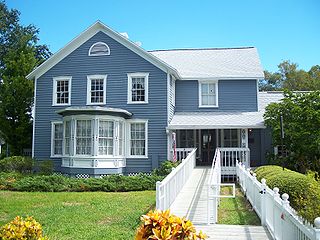
The J. O. Douglas House is a historic house located at 209 Scotland Street in Dunedin, Florida. It is locally significant as one of the oldest buildings in the town and as the home of one of the owners of an important early store in the pioneer community, and it remains an excellent example of vernacular architecture in central Florida.
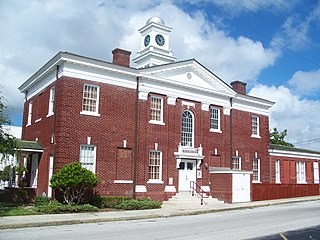
Built in 1915, the Old Tarpon Springs City Hall is a historic site in Tarpon Springs, Florida. It is located at 101 South Pinellas Avenue. On August 10, 1990, it was added to the U.S. National Register of Historic Places. It was designed by renowned architect Ernest Ivey Cook in the neoclassical style.

The E. R. Meres Sponge Packing House is a historic site in Tarpon Springs, Florida. It is located at 106 West Park Street. On April 10, 1991, it was added to the U.S. National Register of Historic Places.
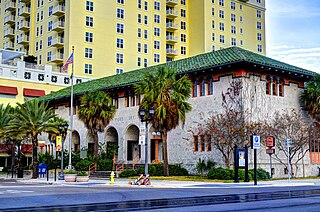
The Cleveland Street United States Post Office, or simply Cleveland Street Post Office, is a historic site in Clearwater, Florida. It is located at 650 Cleveland Street. It was dedicated on October 9, 1933. It was built by the Walt and Sinclair construction firm in a Mediterranean-Revival architecture style. On August 7, 1980, it was added to the U.S. National Register of Historic Places.
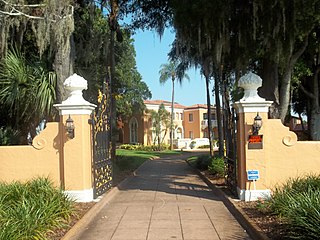
The Casa Coe da Sol is a historic site in St. Petersburg, Florida, United States. It is located at 510 Park Street. On July 17, 1980, it was added to the U.S. National Register of Historic Places. It was the last commission of the famed 1920s architect Addison Mizner.

The Weedon Island Preserve is a 3,190-acre natural area situated along the western shore of Tampa Bay and located at 1800 Weedon Drive NE, St. Petersburg, Florida, United States. It is predominately an estuarine preserve composed of upland and aquatic ecosystems such as mangrove forests, pine/scrubby flatwoods, and maritime hammocks, and is home to a variety of native wildlife. The preserve is also a designated archaeological area, with several shell mounds identified on the property that provide evidence of early peoples who inhabited the land for thousands of years.

This is a list of the National Register of Historic Places listings in Pinellas County, Florida.

The Bay Pines Veterans Administration Home and Hospital Historic District is a U.S. historic district located at 10000 Bay Pines Blvd. in Bay Pines, Florida. The district contains prehistoric aboriginal sites and fourteen Mediterranean Revival style hospital buildings constructed from the 1930s. The district is home to the Bay Pines Veterans Affairs Medical Center, a general medical and surgical hospital with 396 beds. It is accredited by the Commission on Accreditation of Rehabilitation Facilities (CARF).























